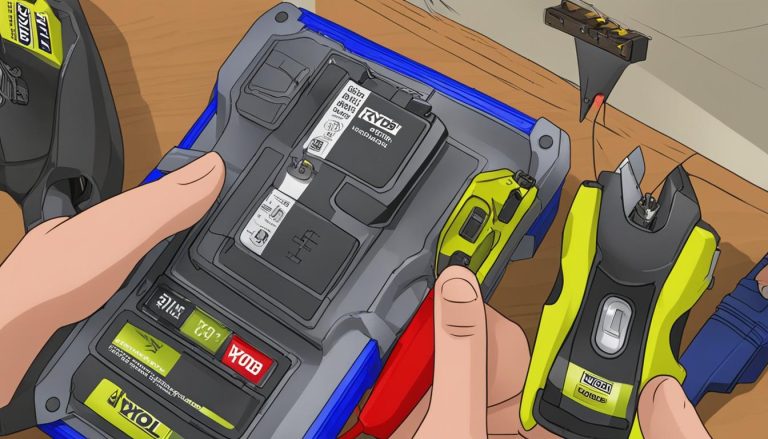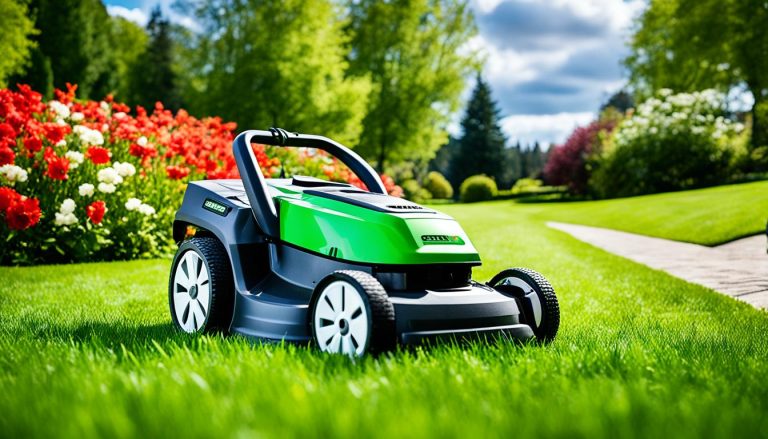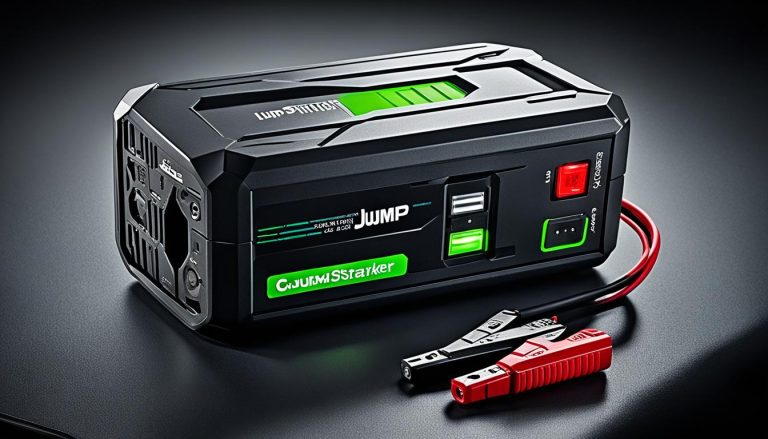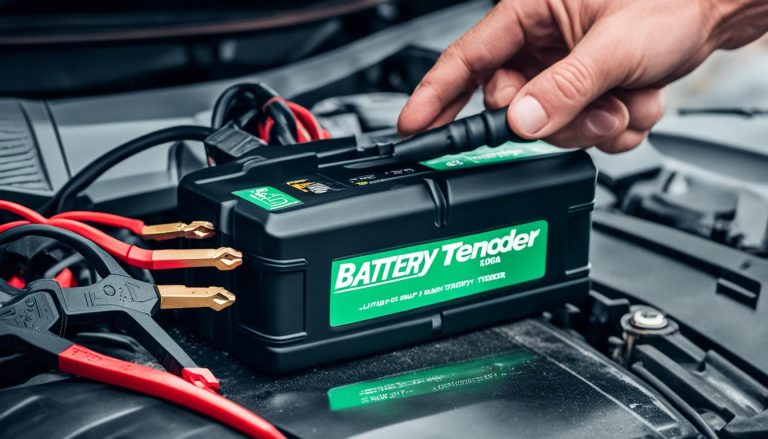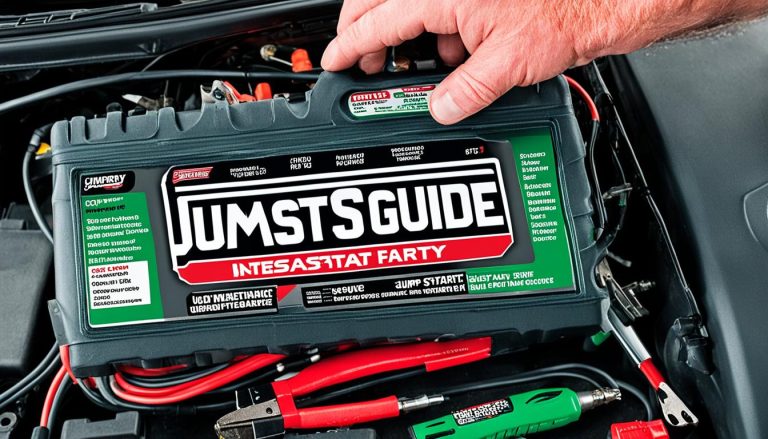Charge Your Battery with a Jump Starter Easily
batterychargers.site and its partners may earn a commission if you purchase a product through one of our links
Imagine yourself in a situation where your car refuses to start due to a dead battery—quite a frustrating predicament, especially if you’re in a hurry or in a remote location. But fear not, as the solution rests in the palm of your hand with a car battery jump starter. A trusted companion for many drivers, using a jump starter to charge your battery gets you back on the road swiftly without waiting for a tow truck or flagging down another vehicle.
With a jump starter, the days of being stranded with a jump starting car battery issue are behind you. This portable powerhouse stores energy in its internal batteries, ready to deliver a high power output that can breathe life back into your car’s electrical system. Just a simple connection, and voilà, you can ignite your engine in seconds and let the alternator do the rest.
Whether you’re a daily commuter or an occasional driver, having a car battery jump starter in your trunk means taking control of unexpected battery maladies. Your newfound road independence keeps you safer and more secure, wherever your travels may take you.
Key Takeaways
- Jump starters provide a quick and reliable method to start your car when the battery dies.
- Portable jump starters eliminate the need for a second vehicle for jump starting your car’s battery.
- While a jump starter won’t fully charge your battery, it’s sufficient to get your engine running and the alternator charging.
- Ensuring your jump starter is charged and ready for use is crucial for roadside emergencies.
- Always refer to your jump starter’s manual for proper connection and usage to avoid risks.
- Keeping a jump starter on hand offers peace of mind and an extra layer of independence on the road.
Understanding the Basics of Jump Starters for Car Batteries
When you’re facing a dead battery, knowing how to use a jump starter can be the difference between a quick departure and a prolonged delay. Gone are the days when jumping a car required another vehicle and a set of cables. The innovation of the portable jump starter has revolutionized how drivers handle a dead battery. With this handy tool, you’re equipped to face such unexpected challenges independently, and more so, safely.
Comparison of Portable Jump Starter and Traditional Jumper Cables
While traditional jumper cables require a second car to provide a jump start, a portable jump starter does not. With the latter, you hold the reigns of your rescuer in the trunk of your vehicle. It’s all about the convenience and the ability to jump start a car with a battery charger that’s compact and solely reliant on its built-in power supply. You can leave behind the worry of flagging down a stranger for a jump-start or being stranded in an isolated lot.
How a Jump Starter Can Save You from Roadside Struggles
A portable jump starter can mean the difference between getting back on the road or waiting hours for roadside assistance. In the event that your alternator fails or the battery succumbs to extreme weather, resuscitating your vehicle’s heart with a jump starter is a swift solution. Moreover, these devices often come with additional features, such as emergency lighting and tire inflators, adding more value to your roadside emergency kit.
The Technical Workings of a Car Battery Jump Starter
The inner workings of a car battery jump starter are remarkably straightforward. It uses a high-powered battery pack to deliver an instantaneous burst of power to your vehicle’s battery, enough to bring your engine to life. This crucial function enables you to drive off under your car’s power, wherein the alternator takes over to recharge the battery. While a jump starter will not charge your battery fully, it’s the pivotal first step in jump starting a dead battery and averting a potential travel disaster.
Remember, familiarity with your jump starter’s operation manual is essential. Understanding how these devices function, and when to use them, could save you precious time and possibly extend the longevity of your car’s battery.
Using Jump Starter to Charge Battery
Have you ever found yourself in a situation where you need to jump start car without another battery? It’s a more common scenario than you might think. Whether you’re in a desolate parking lot or on the side of the road, the convenience of a portable jump starter can be a game-changer. While these compact devices are mighty in their ability to get your engine running, they’re not designed to fully charge your car battery.
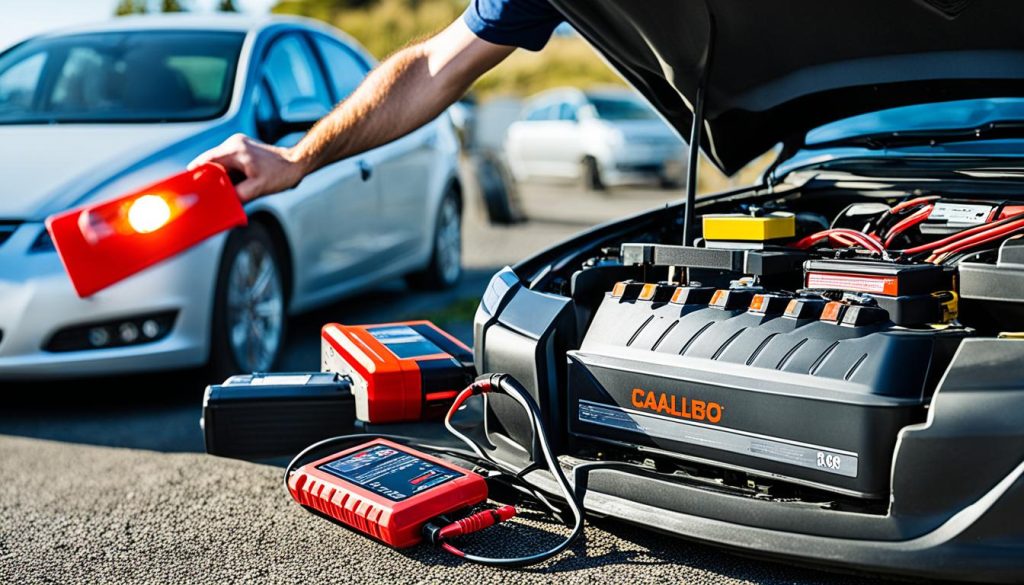
Let’s dive into how you can utilize the best jump starters for car batteries to get back on the road swiftly. These devices operate by providing a burst of power necessary to turn over your car’s engine, effectively handing over the duty of charging the battery to your vehicle’s alternator. With these handy units, a dead battery need not spell the end of your journey, as they give your car just the boost it needs.
Note: Remember, using a jump starter will not replace the prolonged and steady power supply required to fully charge a car battery; it serves as a temporary and immediate solution to revive your engine.
- Verify the jump starter is fully charged and properly maintained.
- Connect the device to your car’s battery, observing the correct polarity.
- Start your vehicle and allow the alternator to take over charging duties.
No matter which brand you choose, a reliable jump starter could be your best ally when confronted with unexpected battery issues. Although not a permanent fix, it provides the necessary jump start to help you reach safety or a service station for proper battery charging. It’s an indispensable tool for every driver’s emergency kit.
Step-by-Step Guide: How to Use a Jump Starter
If you find yourself with a dead car battery, knowing how to jump start a car with a jump starter can be a game-changer. A jump starter is a straightforward tool, but it requires proper handling to ensure safety and effectiveness. Let’s walk through the necessary measures, connections, and actions to revive your vehicle with this invaluable device.
Preparing Your Jump Starter for Use
First, make certain your jump starter is fully charged. A partially charged starter may not be able to provide the necessary power to start your engine. Press the power button to check the charge level and, if needed, recharge the unit before proceeding.
Connecting the Jump Starter to Your Car Battery
Once your jump starter is ready, it’s time to connect it. Identify the positive terminal on your car battery, usually marked with a plus (+) sign and a red cap. Connect the red clamp from the jump starter to this terminal. Next, locate a stable metal surface on the engine block or chassis to attach the black clamp – this serves as your grounding point. It’s critical to ensure that this is away from the battery and fuel lines to prevent sparks.
Starting Your Car Safely with a Portable Jump Starter
With connections secure, power on the jump starter. Wait for a couple of minutes to allow the current to flow into the car’s battery. Now, attempt to start your car — it should turn over. If the car doesn’t start on the first try, wait a few more minutes before trying again. Once your car is running, turn off the jump starter and carefully disconnect the clamps, starting with the black one, followed by the red.
Here’s a quick reference table on the sequence of steps to take:
| Step | Action | Details |
|---|---|---|
| 1 | Charge Jump Starter | Ensure the device is fully charged for optimal power output. |
| 2 | Connect Red Clamp | Attach to car battery’s positive (+) terminal. |
| 3 | Connect Black Clamp | Secure to a metal part of the car’s engine block or chassis. |
| 4 | Turn On Jump Starter | Activate the device to initiate power flow. |
| 5 | Start the Car | Attempt to ignite the engine; repeat if necessary. |
| 6 | Disconnect Clamps | First remove the black clamp, then the red clamp after engine starts. |
Remember, patience is key during this process. Immediately starting your car after connecting the jump starter might not yield immediate results. Allow the battery to absorb some charge before ignition. Following these guidelines, you’ll quickly master how to jump start a car with a jump starter, preparing you for those unexpected battery outages.
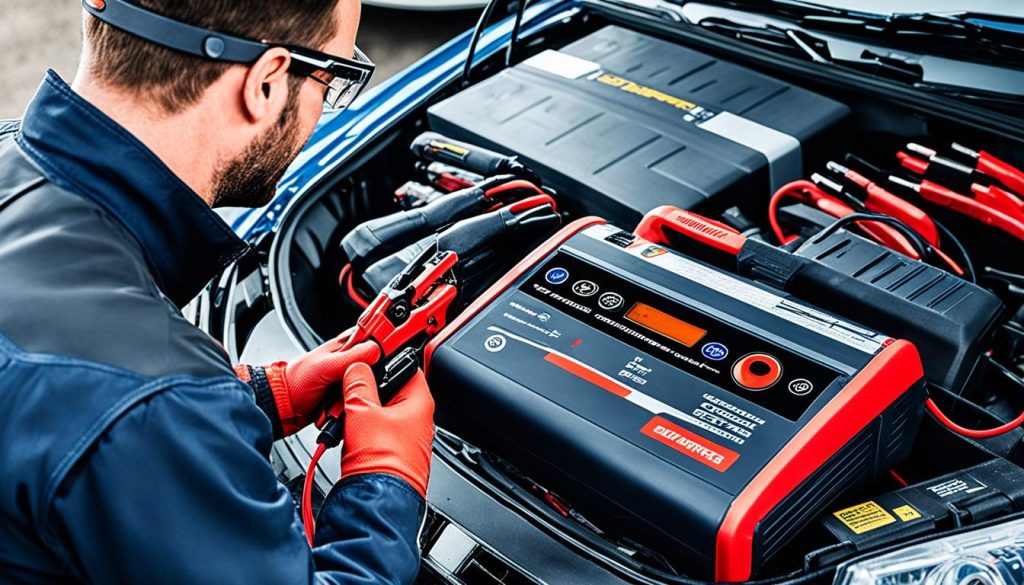
Top Tips to Ensure a Successful Jump Start
Are you prepared to utilize your portable jump starter? Though the process may seem daunting, with a few expert pointers on how to use a jump starter, you’ll be ready to face a dead battery situation with confidence. Let’s ensure that you can get back on the road quickly and safely.
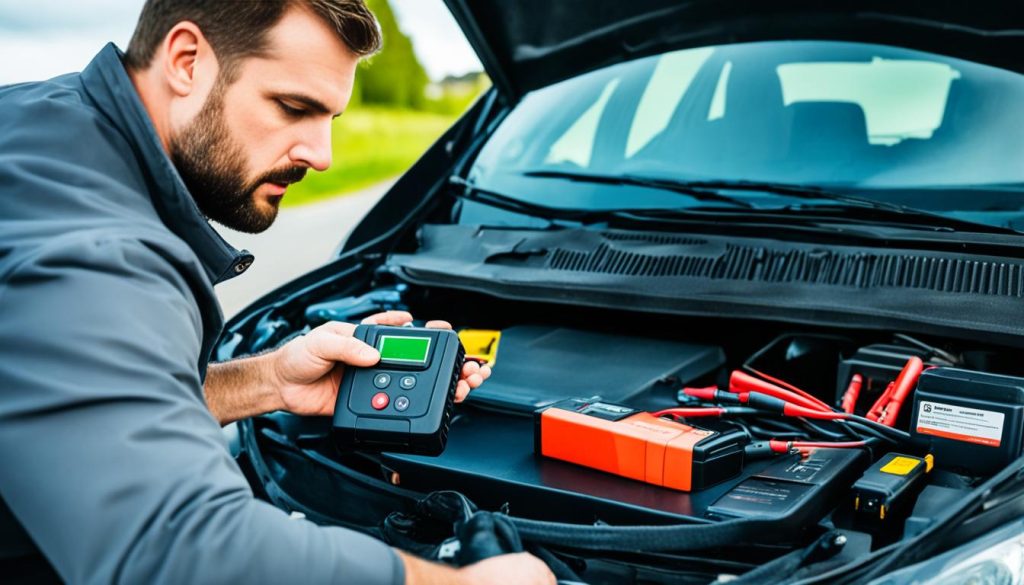
- Identifying Battery Terminals: Your car battery has two terminals: positive (typically marked with a plus sign or the letter P) and negative (usually marked with a minus sign or the letter N). Always connect the red clamp of your jump starter to the positive terminal and the black clamp to a metal surface on the engine block, away from the battery and fuel lines.
- Environmental Safety: Check for any liquids, flammable materials, or excessive dirt around the battery area. Ensure the environment is clean and dry before starting the process.
- Avoiding Clamp Contact: Never touch the clamps together when the jump starter is on; this could cause sparks or short-circuiting.
- Maintenance and Charging: Keep your jump starter in peak condition by charging it after use or, at the very least, every six months. This routine ensures it’s always ready when you need it.
- Following Manufacturer’s Instructions: Before attempting a jump start, consult the manual of your jump starter for any specific instructions or precautions.
Remember, while these guidelines will help navigate the majority of situations, your jump starter’s manufacturer may have additional or different recommendations for use. Always keep these in mind for safe and effective handling of your device.
| Checklist Item | Details | Completed |
|---|---|---|
| Battery Terminals Identified | Positive and Negative terminals located | Yes/No |
| Environment Safety Check | No liquids or flammable material present | Yes/No |
| Clamps not touching | Ensured clamps do not come into contact | Yes/No |
| Jump Starter Charged | Device is fully charged and operational | Yes/No |
| Manufacturer’s Manual Reviewed | Instructions have been read and understood | Yes/No |
Sticking to these key points will not only help you navigate the task with greater ease, but it will also enhance the safety and longevity of your portable jump starter. Happy and safe travels!
Choosing the Right Jump Starter for Your Vehicle
With a plethora of options available, selecting the best jump starters for car batteries can be challenging, yet it’s crucial for ensuring a quick recovery from a dead battery situation. Here, we outline key features you should look for and provide tips on maintaining your device for optimal performance.
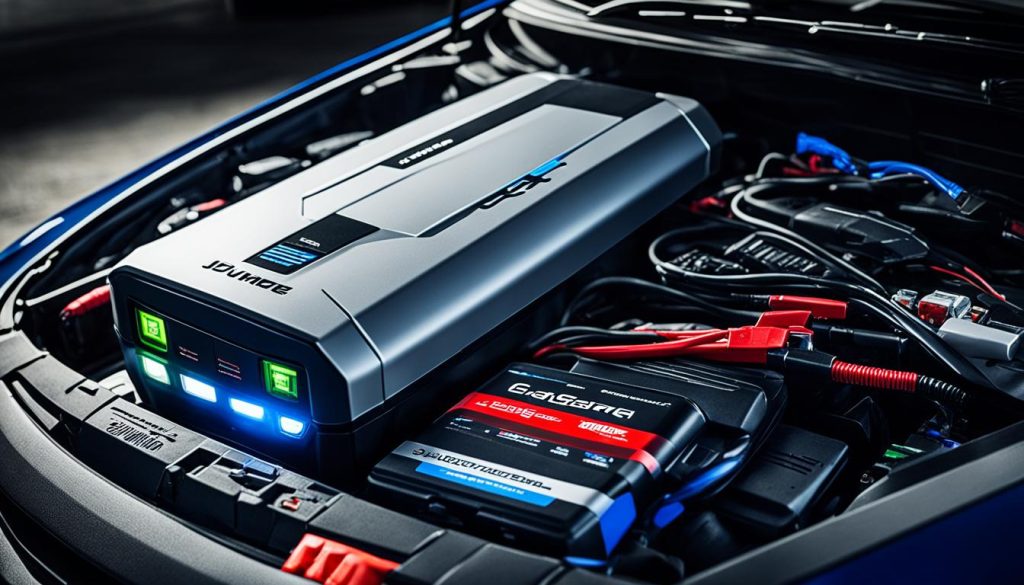
Best Jump Starters for Car Batteries: Features to Consider
When considering the jump starting needs for your car battery, it’s important to look beyond mere compatibility. Here are some features that can elevate the utility of jump starters to a must-have emergency tool:
- Ample Peak Current: Ensure it has enough amperage to turn over your specific engine.
- Durable Battery Clamps: These should be sturdy with a good grip for a reliable connection.
- Built-in Safety Features: Overcharge protection, reverse polarity alarm, and short circuit safeguards are essential.
- Portability: Lightweight and compact design can make all the difference in storing and handling.
- Additional Functions: Look for extra features like USB ports for charging devices, emergency lights, or even air compressors.
These functionalities not only assist in jump starting car batteries but also bring added usefulness to your jump starter.
Maintaining Your Jump Starter for Long-Term Reliability
To ensure the longevity and readiness of your jump starter, simple maintenance habits can go a long way:
- Charge Regularly: Even when not in use, charge your jump starter periodically to keep the battery healthy.
- Inspect for Corrosion: Regularly check the terminals and clamps for any signs of wear or rust.
- Store Properly: Keep your jump starter in a dry, moderate temperature environment to prevent damage.
- Update Software: If your device has digital components, keep the software updated for peak performance.
By following these guidelines, your jump starter will be a dependable ally during those unexpected dead battery moments, ensuring a swift and safe return to the road.
Jump Start Car Without Another Battery: The Benefits of Independence
When you find yourself with a dead car battery, the last thing you want is to be left stranded and waiting for another car to assist you. A portable jump starter eliminates the need for a donor vehicle, allowing you to handle the situation quickly and independently. Facing a battery problem on your own can indeed seem daunting, but with these compact devices, you’re provided with a powerful ally that is both convenient and efficient.
How Portable Jump Starters Empower Solo Drivers
Empowerment is the word when it comes to operating your own portable jump starter. Not only do you get back on the road faster, but you also build confidence in handling unexpected car troubles. Whether you’re late for a meeting or en route to a family gathering, these gadgets allow you to **jump start car without another battery**, providing peace of mind no matter where you are. Independence from external aid means you’re self-reliant, and with the latest advancements in portable jump starter technology, this process is simpler than ever before.
The Safety Advantages of Not Relying on Another Vehicle
Safety should never be compromised, and that’s another area where the portable jump starter shines. You avoid the risks of sparking or short-circuiting that might occur when connecting cables to another vehicle, especially if either party is unsure of the proper procedure. By having a jump starter, you’re also prepared for instances when there may be no one around to help — be it in a deserted parking lot at night or a quiet side road during early morning hours. The control over your own safety and time is indeed empowering, and a reliable portable jump starter provides just that.
FAQ
Can I use a jump starter to charge my car battery?
Jump starters are primarily designed for jump starting your car, not for charging its battery. They provide a burst of energy to help start an engine with a discharged battery. To fully charge your battery, you would need to use a battery charger or let your vehicle’s alternator do the job while running the engine.
What is the difference between using a portable jump starter and traditional jumper cables?
Portable jump starters use an internal battery to provide the necessary power to start your car, eliminating the need for another vehicle, which is required when using traditional jumper cables. They also often include safety features and are more convenient to use, particularly if you’re in a remote location.
How does a jump starter work?
A jump starter works by delivering a sudden surge of electricity to your car’s dead battery, providing it with enough power to start the engine. Once the engine is running, the alternator will recharge the battery while you drive.
What do I need to do before I use my jump starter?
You should first make sure that your jump starter is fully charged. After that, read the instructions specific to your jump starter carefully, as different models may have different requirements or steps to follow.
What’s the correct way to connect a jump starter to my car battery?
Always start by connecting the positive (red) clamp to the positive terminal of your battery. Then attach the negative (black) clamp to an unpainted metal surface on your car’s frame or engine block, away from the battery and fuel system. Once everything’s connected, you can turn on the jump starter.
How do I safely start my car with a portable jump starter?
After correctly connecting the jump starter to your car battery, turn on the jump starter (if required by your model), then try to start your vehicle. If it doesn’t start right away, wait a few minutes to allow the jump starter to transfer more power, then try again. Once the car starts, turn off the jump starter before removing the clamps in the reverse order you attached them.
How often should I maintain my jump starter?
You should charge your jump starter after each use and every six months if unused to maintain its battery life. It’s also a good practice to inspect it visually for any signs of damage or corrosion regularly.
How do I choose the best jump starter for my car battery?
When choosing a jump starter, consider your car’s battery size and voltage. Look for additional features that you may find useful, such as a built-in flashlight, USB charging ports, and safety protection circuits. Always consult your vehicle’s manual and the jump starter’s specifications to ensure compatibility.
What are the benefits of using a jump starter compared to seeking help from another vehicle?
The main benefits are convenience and independence. You don’t need to rely on another vehicle, which can be especially important if you’re in a remote area or in conditions where it’s tough to get help. Additionally, there’s less risk of incorrect connections that can cause sparks or damage to your vehicle’s electronics.
What are the safety advantages of a portable jump starter?
Portable jump starters typically include safety features such as reverse polarity alarms, short circuit protection, and overcharge protection, reducing the risk of damaging your vehicle’s electronics. They also minimize the risk of sparks and potential accidents that can occur with traditional jumper cables if not used correctly.

